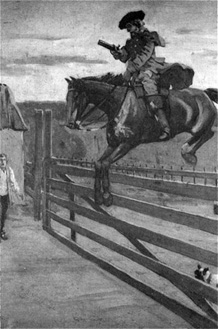Dick Turpin in reality and myth: South, North and North again
Speaker: Professor James Sharpe
 Dick Turpin, as imagined in William Harrison Ainsworth's novel Rookwood
Dick Turpin, as imagined in William Harrison Ainsworth's novel Rookwood
- Wednesday 19 June 2013, 7.30PM
- Free admission
Booking required, see below for tickets - Berrick Saul Building, University of York (See locations page)
Event details
This lecture will focus on the life and subsequent legend of Dick Turpin, the famous English highwayman who was executed at York in April 1739. Despite the associations which the city has built with him, most recently through the heritage industry, Turpin was born in Essex, and came north under an assumed name when things got too hot for him in the London area. His early career, which is well documented, took place in the south, but he was arrested for horse theft while living in East Yorkshire, and was subsequently executed for that offence.
Despite a flurry of interest at the time of his execution, Turpin was not one of the highwaymen whom the eighteenth century remembered best. He was, however, revived by the Manchester-born novelist William Harrison Ainsworth, who made Turpin a central figure in his novel Rookwood of 1834. In this process Ainsworth completely recreated Turpin: Rookwood was a massive success, and the fictionalized Turpin created by Ainsworth was essentially the Turpin we know today, somebody who was vastly different from the Turpin of historical reality.
Thus with Turpin we have a rare example where it is possible to reconstruct something of the real person and, with some precision, how the myth surrounding him grew. Thus we can look at how historical myths develop and also ponder the nature of fame in the story of this Essex butcher who ended his life at York Tyburn, and of the author who recreated him, once a very famous novelist but now largely forgotten.
Speaker biography
Born in London in 1946, James Sharpe gained a BA and DPhil in Modern History at Oxford, and after holding temporary posts at the Universities of Durham and Exeter entered employment with the University of York in 1973. Since then he has established expertise in the field of the history of cri in England c. 1550 – 1750 and the history of witchcraft over the same period. He published a book on Turpin and the Turpin legend in 2004.

